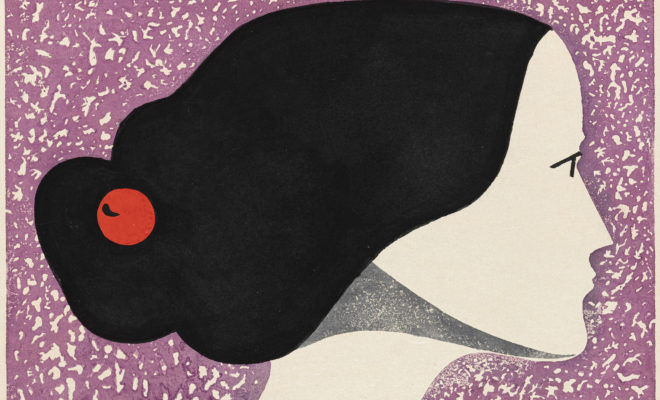
Arts & Culture
The Ringling: Sharing Humanity in a “Fraught Time”
By Sylvia Whitman
September 1, 2020
The statue of David in The Ringling’s courtyard may be wearing a mask, but coronavirus protections haven’t kept the museum from offering the Sarasota community the balm of art. Spacious galleries and 66 acres of grounds allow for ample social distancing, with only the upper floors of Ca’ D’Zan and the interactive circus galleries off limits. Individual audio tours have temporarily replaced groups led by docents. And for those longing for lectures, artist talks, and panel discussions, The Ringling has a virtual lineup in a variety of registers. October’s offerings range from spooky stories from the collection to Vancouver-based artist Howie Tsui’s musings on the martial arts, Buddhist hell scrolls, Hong Kong politics, and stories of exile and isolation.
“It’s been an interesting challenge to think about what can we do to engage and connect with people to provide this sense of shared humanity in this really fraught time,” says Laura Steefel-Moore, head of the museum’s education department.
In the Galleries
At a time when art, like people, often has to stay put, The Ringling’s patrons can enjoy extended exhibitions interrupted by the lockdown: Chinese artist Sun Xun’s 3-D animated film, Time Spy; Howie Tsui’s multimedia panorama, Retainers of Anarchy; Syd Solomon’s selection of camouflage-infused paintings, Concealed and Revealed. Curators have also drawn from the museum’s collections to mount new shows. Raiding the closet? Hardly. Being Seen features recent acquisitions of photos by Black women exploring identity, gender, and power. Opening in November, Kabuki Modern spotlights Kabuki actor portraits from late 19th to mid-20th century Japan, both mass-produced woodblock prints and custom-made paintings.
Many of the prints are recent gifts, including an album donated less than a year ago by Elenore Baldinger, a Marylander who was visiting her family in Sarasota. The album contains 100 portraits of a single actor in different roles from the 1890s—images on display for the first time. “It’s really exciting to get all of these out,” says Asian art curator Rhiannon Paget. “The prints are really, really exquisite. They were printed with the finest material and highest technical levels available at that time, with gorgeous colors, shimmering mica backgrounds and altogether superb artisanship. Very dynamic.” Also making a debut is a refurbished and remounted painting purchased in 2017.
“It’s lovely to be able to show things that haven’t been on view before,” adds Paget. “Asian art may be The Ringling’s most recent area of focus, but the collection is strong and attracts a great deal of interest locally and further afield.”
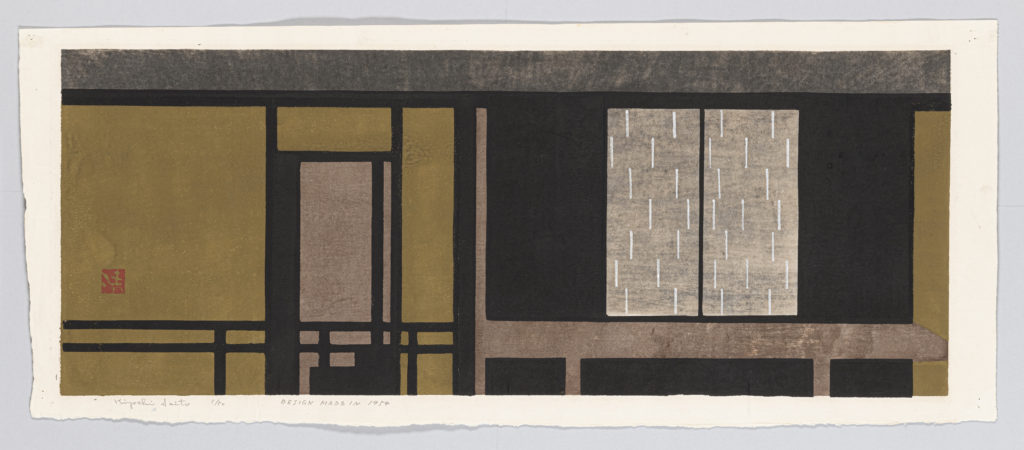
On the Grounds
More than fine art draws visitors to The Ringling. Events manager Christina Fraser books all kinds of gatherings—a schedule the pandemic has put through the shredder. “We’ve had to reinvent everything we do,” she says.
With mega weddings on hold, Fraser’s team began promoting “elopement packages” for local couples: outdoor spot, half an hour, under 10 guests, BYOO (bring your own officiant). One couple chose the site of one of their first dates, under a banyan on the tree trail by the bay.
Tickets for yoga on the Ca’ D’Zan lawn have also been selling out. “People are looking for opportunities to escape from stress,” says Fraser. Next on tap: acoustic music at sunset. Picnic, anyone? Providing food and drink will be Metz Culinary Management, the new food service vendor revamping the Banyan Café and the soon-to-be-rechristened restaurant. The coffee shop has just reopened as Starbucks, and fine dining is set to return by October.
In the Ether
The total lockdown of spring pushed the education team to reimagine face-to-face gatherings. The Ringling’s monthly Reflection Program, for instance, invites people with dementia and their care partners to the galleries for facilitated conversations. Do you like this painting? How does it make you feel? Although migrating to Zoom sometimes diminishes images’ breathtaking qualities, it has also enabled less mobile members of the memory-loss community to participate. Interactive and educational online family programs offer another kind of respite, for parents: screen time without guilt! Although the team encourages moms and dads to participate, they can also take a short break, leaving the remote teaching to The Ringling.
Distance offerings have expanded the museum’s reach. Snowbirds and other out-of-towners can attend the virtual book club or live events like “Ask a Curator” and “Contemporary Questions about the Historic Circus.” Free for members, most sessions cost $5 and require a “ticket,” a way of keeping the Zoom frame intimate and manageable. The informality of connecting from home “tends to make the conversations a little more relaxed and easygoing,” says Steefel-Moore. “You also get to see sides of personality that you wouldn’t if everyone was in the gallery.” Afterward, recorded content goes up on the website, accessible to national and international audiences at any time.
As well as going broad, online presentations can also run deep. High-res images allow close-ups—details viewer might miss in a gallery. Comparing two images side by side is a cinch. No longer tethered to physical displays, a virtual tour can cross eras and emphasize themes. With digital programs, Steefel-Moore says, “it’s much easier to pull up photographs, prints, or other artworks that aren’t currently on view in the museum.” With Black Lives Matter in the news, the museum can spotlight works by Black, indigenous, and other artists of color.
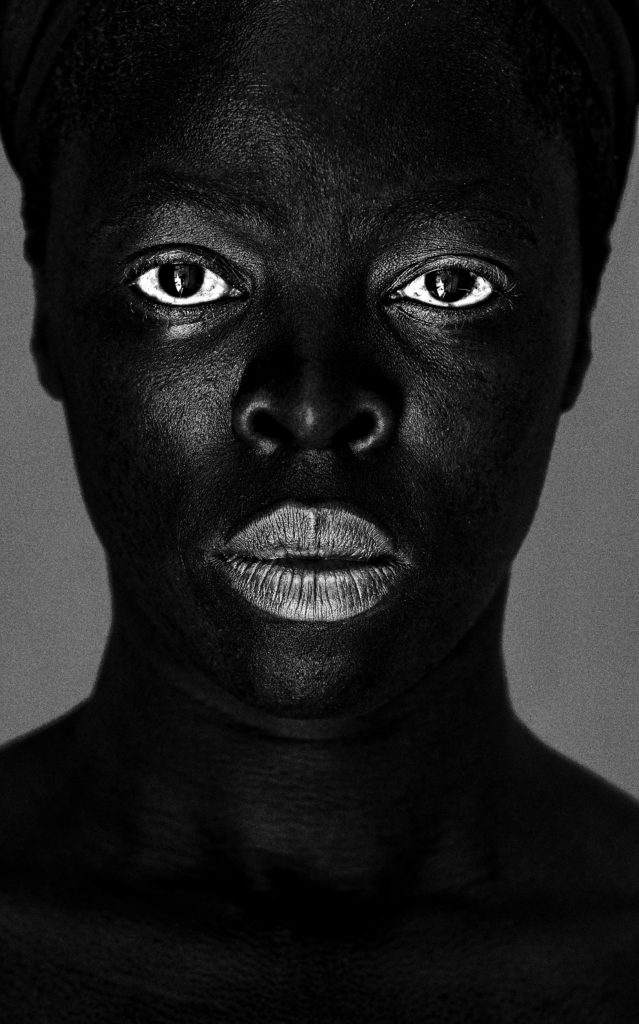
Finally, the ed team is imagining how to capitalize on not being in a museum full of rules and decorum. Steefel-Moore put together a food-based tour complete with a tasting menu sent to participants in advance: Inches from a digital reproduction of a still life, for instance, viewers could be savoring the flavors in the scene.
Looking Forward to Spring
Although no one knows exactly what 2021 will bring, comfort, diversity, and creativity will carry into the season. To date, the museum has announced two new exhibitions. Frans Hals: Detecting a Decade opens on Valentine’s Day—a collaboration between The Ringling and the Dallas Museum of Art, where this close-focus exhibit is currently on view. It juxtaposes two portraits of the same man, Haarlem brewer and mayor Pieter Jacobsz Olycan, painted about 10 years apart by 17th century Dutch Baroque artist Frans Hals. For the first time, the two paintings are hanging side by side (one belongs to The Ringling, the other to a private collector), giving viewers a rare chance to see how a master’s technique evolved.
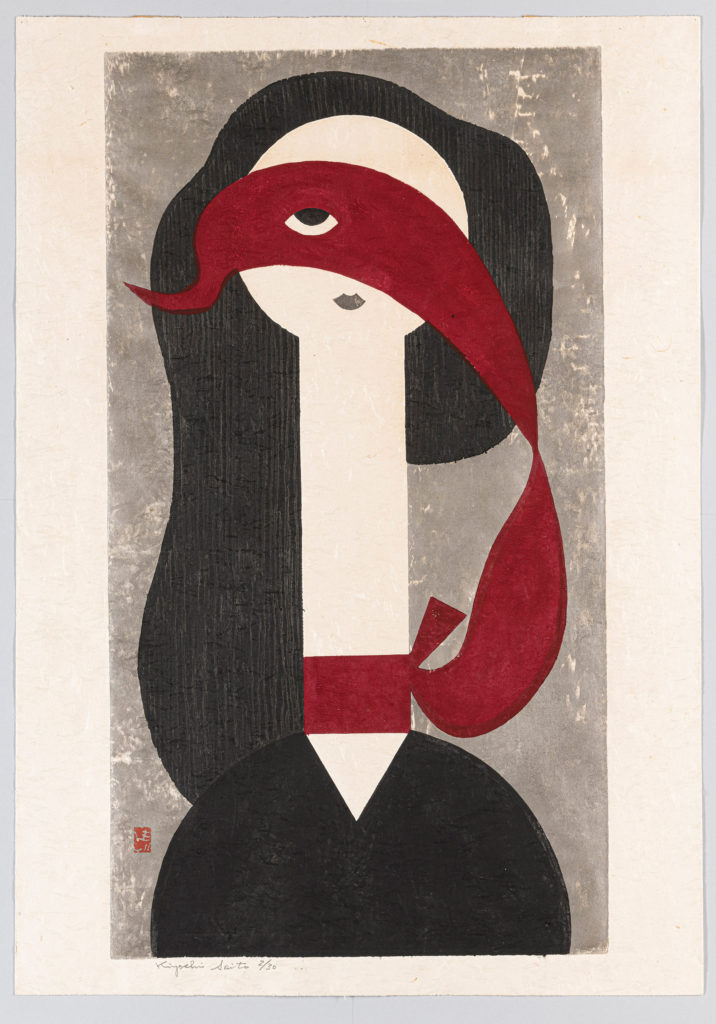
Woodblock print; ink and color on paper with mica by Saitō Kiyoshi, 1907–1997 |
79.8 × 74 cm (31 7/16 × 29 1/8 in.)
The John & Mable Ringling Museum of Art, Gift of Charles and Robyn Citrin, 2019, SN11658.62

Woodblock print; ink and color on paper by Saitō Kiyoshi, 1907–1997 |
82 × 54 cm (32 5/16 × 21 1/4 in.)
The John & Mable Ringling Museum of Art, Gift of Mr. and Mrs. Karl A. Bickel, 1961, SN8070
Saitō Kiyoshi: Graphic Awakening, a single artist exhibit, moved up on the museum schedule, from April to mid-March. “He’s probably the best known modern Japanese printmaker in the U.S.,” says Asian art curator Paget. “During the postwar period, he emerged as a favorite among the members of the Allied occupation. Then he was able to take advantage of all these new exchange programs that were launched by the American government and NGOs to strengthen ties between Japan and America” at a time—the ‘50s and ‘60s—when officials were trying change the image of Japan from enemy to Cold War ally. A graphic designer and illustrator first—”he had a very keen sense of design”— Saitō failed as a painter and “actually hated making prints.” Which is ironic, Paget explains, because among his peers no one better “exploited the physical materials of woodblock printmaking in a more explicit way than he did. He has all these wonderful woodgrain textures in his prints, lots of gouge marks; you get a sense of the power of the chisel scraping the surface of the wood, and then the stickiness of ink as it pulls away from the block to the paper.” Given the variety of his subjects and technique, Paget promises that the exhibit will offer “something for everyone.”
Mounting the show and writing the catalog—earlier than first planned, on a tightened budget—has posed a number of challenges: research libraries closed, delivery systems disrupted. But the pandemic lockdown had a silver lining, says Paget. “I had a little bit more time at home to devote to the final stages of the manuscript.”
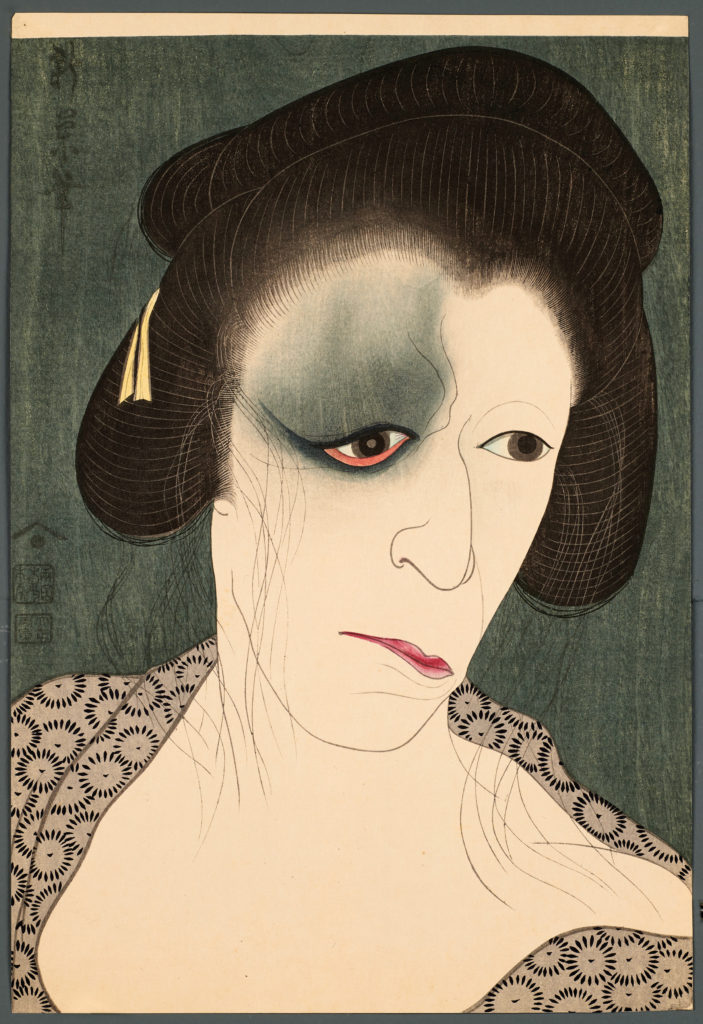
Onoe Baikō VI as Oiwa, Number 4 from the series Actor Portraits, 1926
Published by Matsuki Heikichi
Woodblock print; ink and color on paper
15 1/4 × 10 1/4 in. (38.8 × 26 cm)
Museum purchase through the David J. Patten Asian Art Fund, 2020, 2020.15
Sarah Cartwright, Ulla R. Searing Curator of Collections, has also found some unexpected grace. There are the extended exhibits, the fresh look at materials in the collection, new tricks like live-streaming from galleries, and the chance to finish projects. In January, the museum completed the reinstallation of a large gallery, but during the pandemic lull, local woodworker Dale Rieke completed a humongous frame for the recently restored 13×22 foot portrait, Emperor Justinian. “He was really excited about being able to contribute his expertise,” says Cartwright. “It’s no small feat to create something that’s beautiful and safely adhered to the wall.”
Despite the uncertainty of these times, Cartwright takes heart that so many people have chosen to live in Sarasota because they feel passionate about the arts, the third largest employer in Sarasota County. Aficionados appreciate the benefits of museums and theaters and botanical gardens. “They don’t want these things to go away. We have such a long history of support. That gives me great hope.” She knows old friends want to support The Ringling, and she trusts they’ll return as they feel able and comfortable to do so.
“I hope that they recognize that we still very much do need their help.”
See The Ringling’s website for the latest info on exhibitions and events: ringling.org.
Feature Image Credit:
Coral, designed 1955, printed 1956 by Saitō Kiyoshi, 1907–1997
Woodblock print; ink and color on paper
45 × 55 cm (17 11/16 × 21 5/8 in.)
The John & Mable Ringling Museum of Art, Gift of Charles and Robyn Citrin, 2014, SN11412.13



You must be logged in to post a comment Login